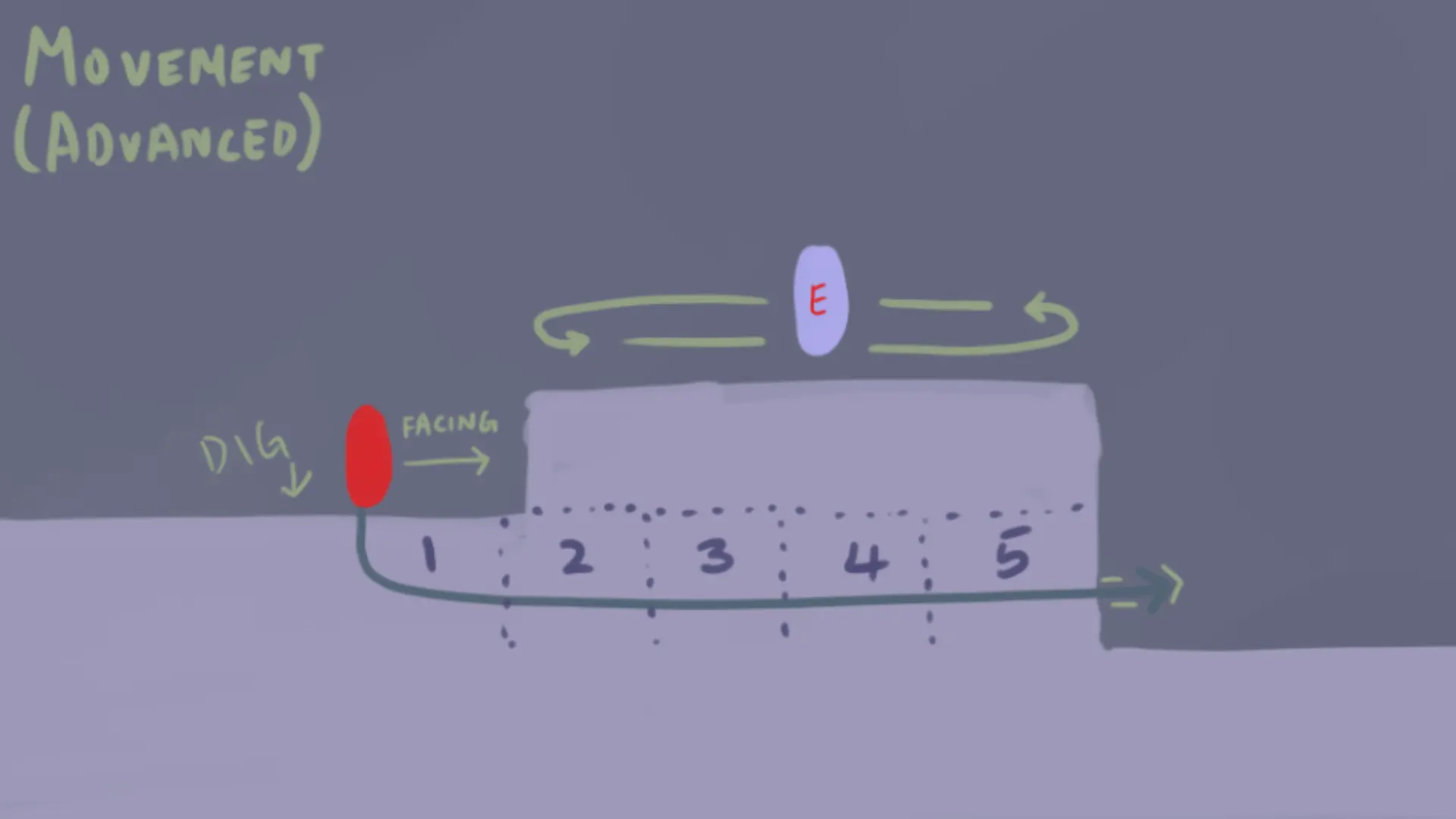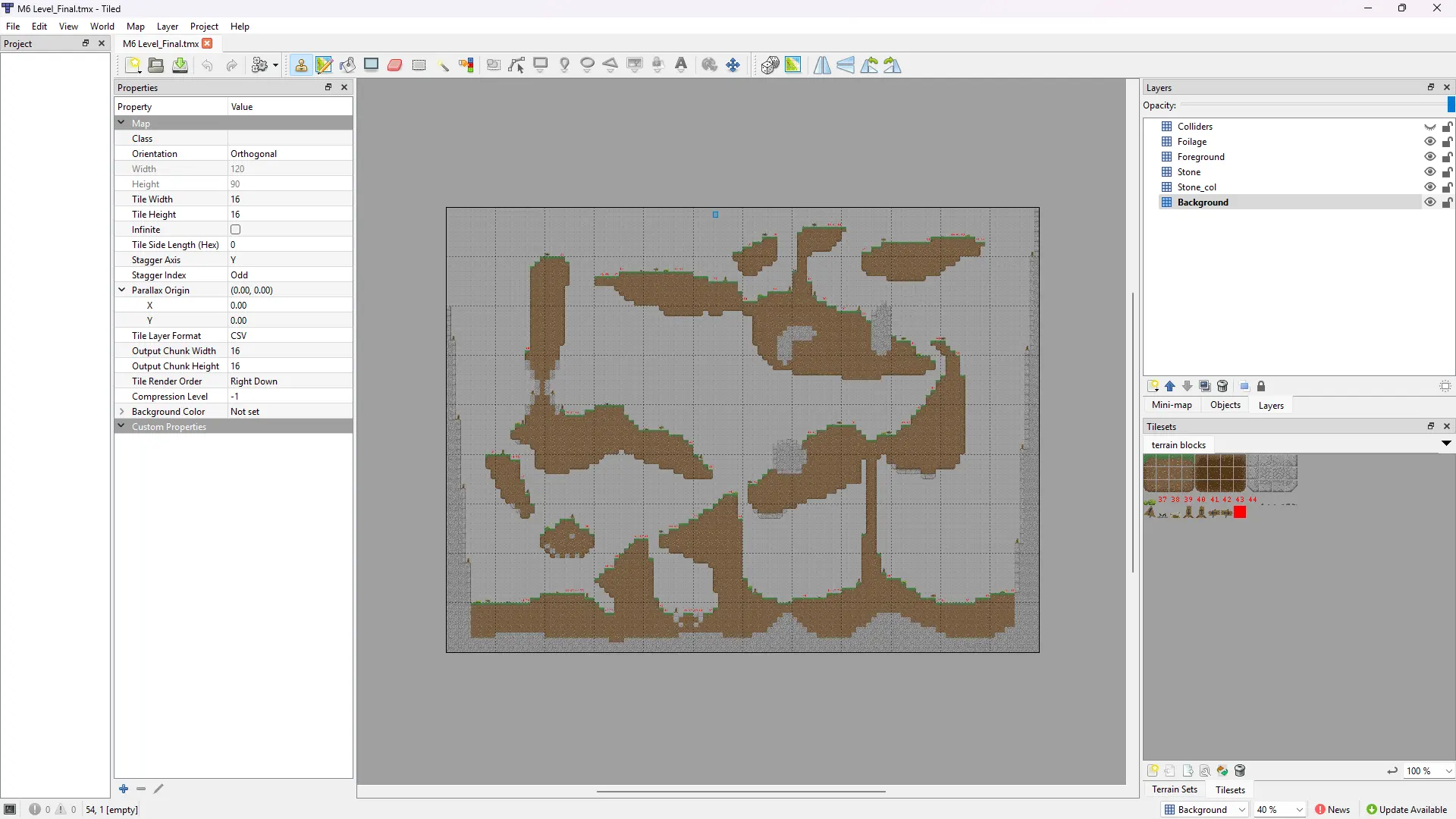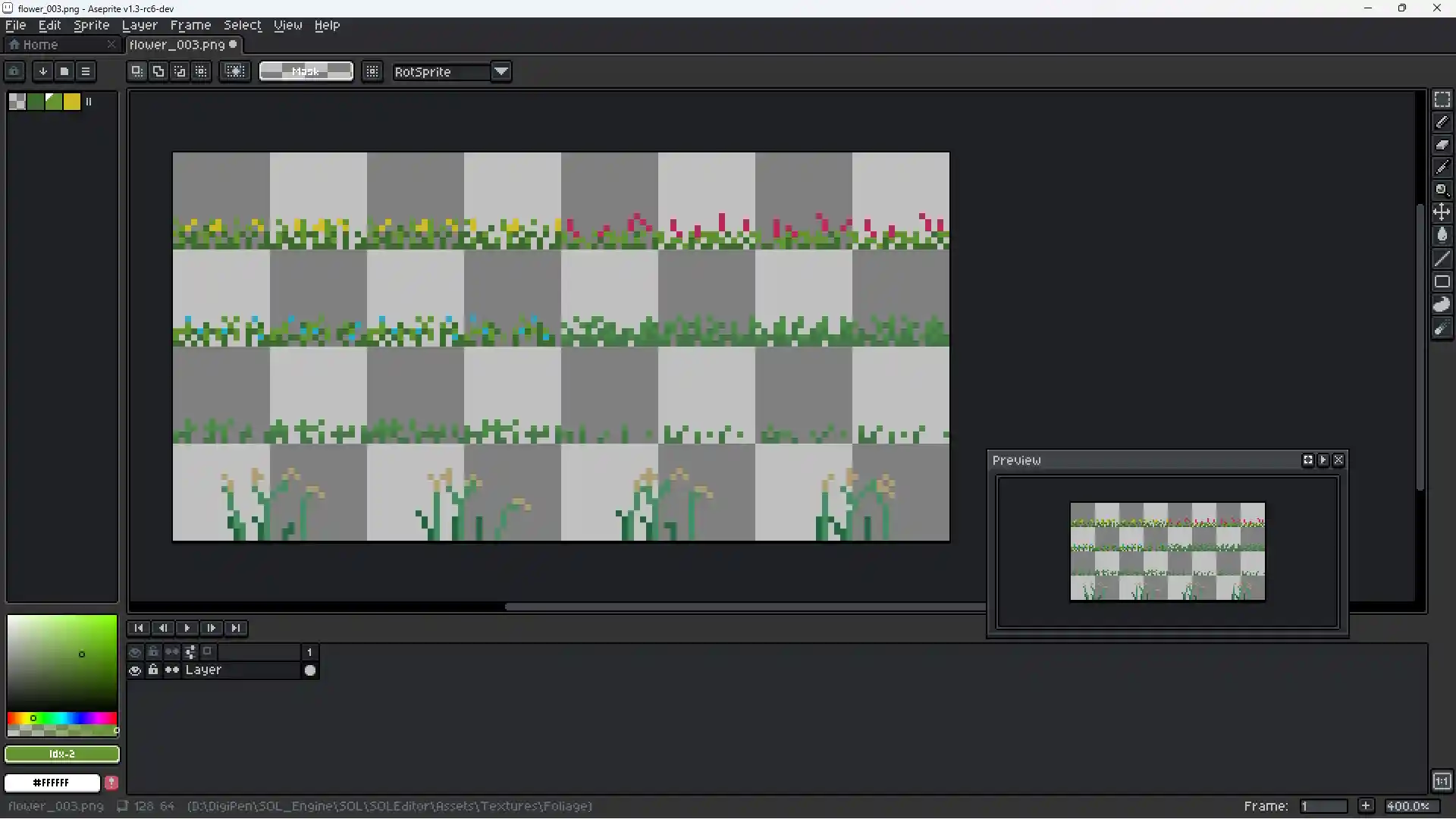Moledy was a Year 2 game project built by a team of six engineers and two designers, including myself. Developed entirely within a custom engine, the project challenged us to plan, design, and execute a complete game without relying on a commercial game engine.
As Design Lead, I wore multiple hats — contributing to design, art, animation, and gameplay programming. To better support the team, I studied C++, allowing me to step in after we dropped C# scripting support and continue developing features directly in the engine. Expanding my skill set helped me stay adaptable and play a more hands-on role across the project.

Early in development, we agreed to use a tile-based system for building levels, but our custom engine lacked both a tile-mapping tool and support for instancing repeated tiles. While we could accept a small performance cost from non-instanced tiles, the absence of a proper level-building workflow was a critical bottleneck. Manually placing each tile by hand would have taken days or even weeks per iteration.
To solve this, I designed a pipeline that used Tiled as a graphical layout tool. I wrote a custom C# script that converted Tiled’s output into a lightweight JSON format readable by our engine. This allowed us to quickly prototype and iterate on level designs, shifting our time and effort from manual level building toward actual design work. The pipeline greatly streamlined development and was key to making the project feasible within our timeframe.
This approach was far from conventional, but I’m proud that I was able to find and implement an out-of-the-box solution to overcome this challenge, ultimately making the development process more efficient and allowing us to focus on creating engaging levels.

Thanks to the time saved during level design and iteration, I was able to implement gamepad support, greatly enhancing the player experience. The unique control scheme stood out among other games in this project and provided an intuitive, responsive feel that outperformed keyboard controls.
With the extra time, I also animated and integrated foliage like grass and flowers, elevating the game’s environment. The added animation brought the world to life, giving it a dynamic feel that enhanced immersion.

Moledy was a Year 2 game project built by a team of six engineers and two designers, including myself. Developed entirely within a custom engine, the project challenged us to plan, design, and execute a complete game without relying on a commercial game engine.
As Design Lead, I wore multiple hats — contributing to design, art, animation, and gameplay programming. To better support the team, I studied C++, allowing me to step in after we dropped C# scripting support and continue developing features directly in the engine. Expanding my skill set helped me stay adaptable and play a more hands-on role across the project.

Early in development, we agreed to use a tile-based system for building levels, but our custom engine lacked both a tile-mapping tool and support for instancing repeated tiles. While we could accept a small performance cost from non-instanced tiles, the absence of a proper level-building workflow was a critical bottleneck. Manually placing each tile by hand would have taken days or even weeks per iteration.
To solve this, I designed a pipeline that used Tiled as a graphical layout tool. I wrote a custom C# script that converted Tiled’s output into a lightweight JSON format readable by our engine. This allowed us to quickly prototype and iterate on level designs, shifting our time and effort from manual level building toward actual design work. The pipeline greatly streamlined development and was key to making the project feasible within our timeframe.
This approach was far from conventional, but I’m proud that I was able to find and implement an out-of-the-box solution to overcome this challenge, ultimately making the development process more efficient and allowing us to focus on creating engaging levels.

Thanks to the time saved during level design and iteration, I was able to implement gamepad support, greatly enhancing the player experience. The unique control scheme stood out among other games in this project and provided an intuitive, responsive feel that outperformed keyboard controls.
With the extra time, I also animated and integrated foliage like grass and flowers, elevating the game’s environment. The added animation brought the world to life, giving it a dynamic feel that enhanced immersion.
